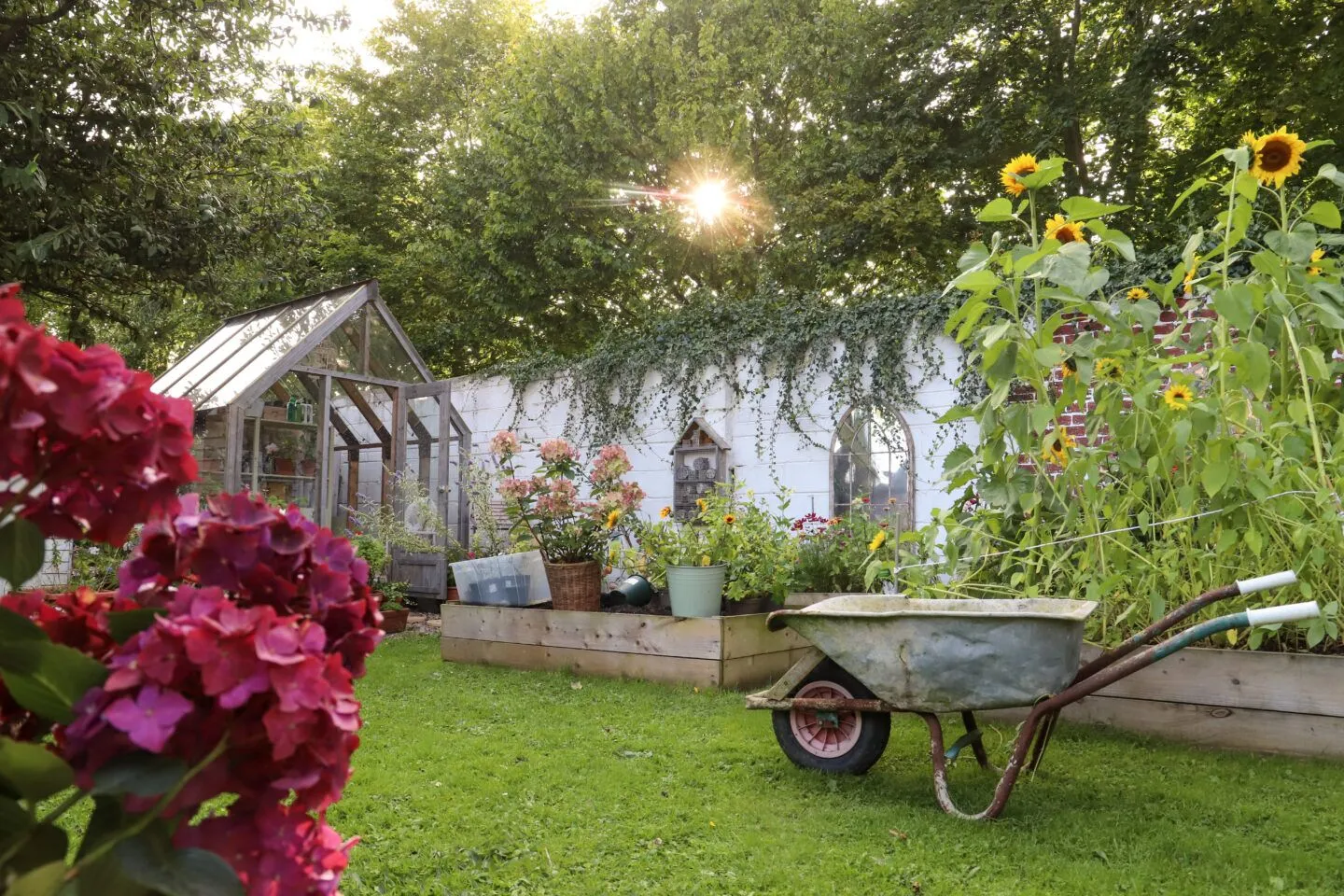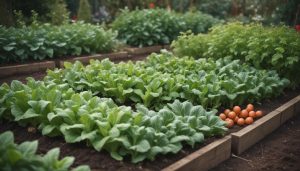How to Build and Maintain a Beautiful Garden on a Budget
Jessica White August 11, 2025
If you want to develop a visually pleasing, eco-aware garden without overspending, affordable climate-resilient gardening is your best path forward. This guide will teach practical, down-to-earth strategies—from choosing the right plants to layering functionality—so you can establish a thriving garden that stands up to weather swings, minimizes costs, and nurtures both ecosystem and aesthetic. Let’s get into the details and discover how to create a garden that’s smart, sustainable, and truly beautiful—all on a budget.

Why Affordable Climate-Resilient Gardening Matters Today
- Tackling changing weather head-on. Today’s climate isn’t predictable—periods of drought, heavy rain, heat waves, and cooler spells can appear suddenly. Choosing methods and materials that can adapt to these shifts is smart economics and smart design. Climate-resilient gardening lets you create a garden that doesn’t just survive but thrives under variable conditions.
- Long-term savings through smart plant and design choices. Native species, efficient irrigation, and resilient layouts cut back on repeated expenses—like costly replacements, high water bills, and pest treatments.
- Sustainability is in style—and good for the planet. Gardens are no longer just decorative—they’re becoming climate-aware green spaces that heal ecosystems and reduce waste. Trends today highlight zero-waste gardening, regenerative methods, and wildlife-friendly landscapes.
Smart, Budget-Conscious Principles for Your Garden
1. Choose Native and Drought-Tolerant Plants
- Why it’s worth it. Native plants and “nativars” (cultivated native plants selected for desirable traits) are inherently adapted to local soil, water, and pest pressures. They flourish without heavy inputs, helping you save on water and maintenance.
- Example picks. Yarrow, coneflower, milkweed, ornamental grasses like switchgrass or blue fescue—these species are resilient, wildlife friendly, and budget-smart.
- Budget tip. Start with seeds or small nursery plants. Later, divide perennials to fill more areas without extra cost.
2. Conserve Water with Efficient Design
- Rainwater harvesting. Rain barrels or simple cisterns collect runoff from rooftops to water plants later. Pair that with rain gardens—shallow depressions filled with water-loving yet climate-resilient plants—and you manage runoff without expense.
- Smart irrigation. Drip irrigation or sink-in-soaker hoses pair with timers or moisture sensors to deliver water precisely where plants need it.
- Permeable surfaces and mulch. Materials like gravel, decomposed granite, and organic mulch slow evaporation and improve soil water retention.
3. Ground-Friendly, Regenerative Soil Practices
- No-dig and composting. Build raised beds or soil layers without intensive digging. Layer compost, straw, or leaves for fertile, low-maintenance beds that don’t strain your budget.
- Cover crops and soil-building. Plant clover or alfalfa to suppress weeds, fix nitrogen, and improve soils come next season. A small upfront investment yields rich soil later.
- Encourage natural cycles. Leave leaf litter or seed heads in place; these provide shelter for pollinators, enrich soil as they decompose, and save you effort.
4. Design for Multi-use Space and Wildlife
- Edible landscaping. Mix ornamental plants with edibles like herbs, dwarf fruit trees, or berry bushes—beautiful and practical in equal measure.
- Vertical gardening. Maximize your footprint by growing up. Living walls, tiered planters, or vertical trellises bring greenery to small or urban spaces.
- Make wildlife welcome. Create butterfly and bee paths, nest boxes, or simple water sources—nature thrives when your garden embraces it.
5. Add Smart Elements Without Overspending
- Low-cost automation. Start small—weather-adaptive timers, soil sensor kits, or simple rain sensors help avoid waste without breaking the bank.
- Solar lighting. Affordable solar path lights or fairy lights add ambiance and visibility without increasing your electric bill.
6. Embrace the Beauty of Less-Perfect Gardens
- Intentional naturalness. Let seed heads stand, foliage fade naturally, twigs remain. A “lived-in” look is not lazy; it’s deliberate, reduces upkeep, and invites wildlife.
- Organic mood over manicured. A garden that’s a bit wild shows character and works with nature—not against it.
## Step-by-Step Implementation on a Budget
- Map and prioritize. Sketch the space. Choose key zones—pollinator border, edible bed, vertical corner, relaxation nook.
- Assess your soil. A home soil test identifies needs. Build soil health naturally with compost, mulch, and cover cropping.
- Source smart. Use seeds, starter plants, or trades via community swaps to reduce cost.
- Install water systems gradually. Rain barrel one side first, drip line on section by section.
- Plant with purpose. Start with a core of native, drought-tolerant, multifunctional species. Let them establish and spread.
- Add features over time. DIY vertical planters, solar lights, a simple seating spot using salvaged materials.
- Mind the seasons. Leave seed heads and remove tattered leaves in spring—not fall. Mulch annually, and compost scraps onsite.
- Observe and grow. Allow what’s working to spread and fill. Note what struggles, adjust selectively. This process stays intentional yet flexible.
Why Affordable Climate-Resilient Gardening Delivers
| Strategy | Advantages |
|---|---|
| Native & drought-tolerant types | Reduce cost, maintenance, and resources—while supporting biodiversity |
| Smart water management | Lowers bills and waste through precision watering and rain harvesting |
| Soil-first, regenerative design | Builds fertile, resilient soil naturally—saving on fertilizers and effort |
| Multi-purpose aesthetic | Combines beauty, functionality, and habitat—adding value without added spend |
| Smart entry tech | Enhances efficiency gradually, spreads cost, and increases resilience |
| Naturalistic, wildlife-friendly | Cuts labor, supports nature, and adds depth and authenticity to design |
Affordable climate-resilient gardening thrives by leaning into ecology and simplicity—not flashy equipment or expensive infrastructure. Instead, it chooses long-term returns and harmony with nature, all while managing cost.
Final Takeaways
By designing with nature, choosing resilient plants, building soil, managing water efficiently, and adding features over time, you can build and maintain a beautiful garden on a budget—one that delights the senses, supports wildlife, and weathers change gracefully. Affordable climate-resilient gardening isn’t just a cost-saving approach; it’s a mindset that values long-term beauty, ecological balance, and adaptability. Over time, these choices create a garden that feels rewarding, purposeful, and deeply connected to its environment.
References
- American Gardener. (2025). Top gardening trends to watch in 2025. American Gardener.
Available at: https://www.americangardener.com (Accessed: 11 August 2025). - Garden Design. (2025). Garden trends for 2025. Garden Design. Available at: https://www.gardendesign.com (Accessed: 11 August 2025).
- Martha Stewart. (2025). Gardening trends for 2025. Martha Stewart. Available at: https://www.marthastewart.com (Accessed: 11 August 2025).







